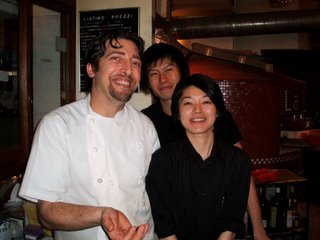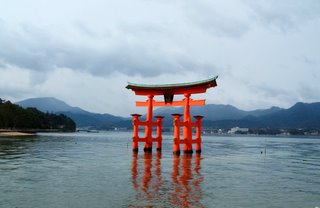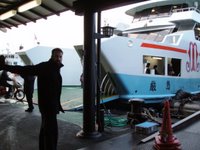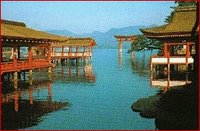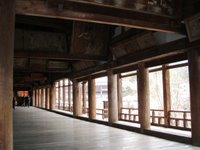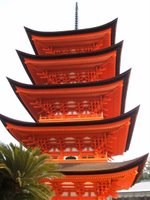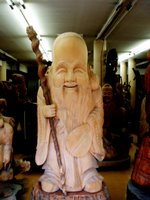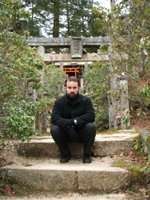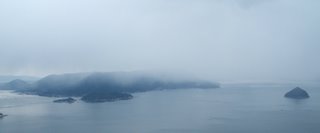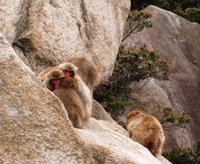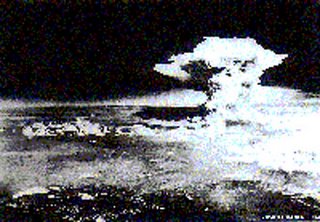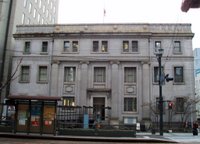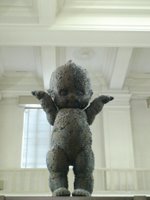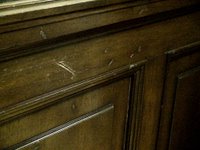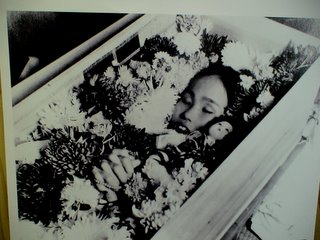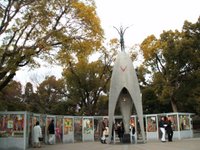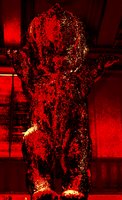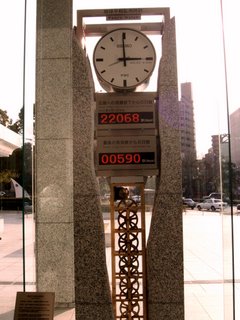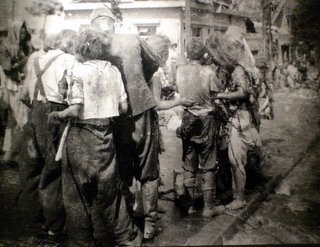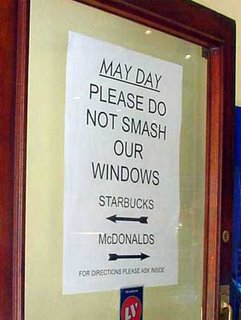
Being a Seattleite, the label of “coffee snob” is already implied. Home of Starbucks, Seattle’s Best, and Tully’s, all easily found throughout Japan, Seattle’s reputation for coffee preceeds itself- in Japan, anyway. To the rest of the world, these coffee giants represent McCoffee- a cheap rip-off from the coffee shops of old, at least as far as good quality taste is concerned. Sadly, these shops are the only place I can readily find a decent shot of espresso, topped with a proper dollop of foam. Upon my arrival in Japan, I tried to avoid these places in hopes of supporting local establishments. Too many times, I got burned, leaving with a soured tongue.
A year or so ago, one of my former colleagues treated me to a mocha at Excelsior Café, a Starbucks wannabe. The mocha was like something I’d expect from a vending machine and though the smokers were separated by the floor above, the stench nonetheless lingered in the air. I then found a little shop near my house- the coffee was so weak it couldn’t even stain the whitest of white silks. The only thing that might discolor fine fabrics in this place were the stale nicotine clouds that permeated the place. Then I found Nishimura’s Coffee, a café decorated in a typical Victorian fashion with dainty tea cups and employees dressed in uniforms fit for a scene of Anne of Green Gables. The waiter politely offered me a table and handed me an English menu. Cappuccino: $6. 'Expensive but...okay, I’ll give it a shot,' I thought to myself. I indicated my choice to the server and he returned a short time later, carrying an eight ounce tea cup of what seemed like brewed Folgers’s, topped with whipped cream. A cappuccino Japanese style? I’m not sure. I choked it down, not wanting to completely waste six bucks. I began reading, Islam and Ecology, but was soon engulfed with secondhand smoke again, prompting my exit.
I reached my breaking point. I gave up. I became a coffee whore. An outspoken critic of Starbucks and their policy of targeting of ma and pa shops, I allowed myself to be sucked into the only hope of enjoying a drinkable cup of joe in a smoke-free environment. I was pleasantly surprised when I entered that all too accustomed space, painted in earthy tones of mocha, and forest green, dotted with quaint maroon colored tables, both because of the familiarity I established with it in my uni days and due to the warm welcome I received from the staff behind the counter. When the barista called out my tall soy cap, I was elated to find a near perfect silky dollop of foam floating on the surface of a double espresso, rising above the rim of a ceramic cup (granted, the shot was left sitting while the foam was being prepared, resulting in reduced crème and the extra hint of flavor it once produced, not to mention having to pay an extra $.50 for the second shot, normally standard in a tall size).
Ahhhh…. the closest thing to quality coffee I had experienced in months. Incidentally, when I visited LA, I stopped into a Starbucks to order my usual. I had to interrupt a conversation between the employees before they even acknowledged my presence. If that wasn’t enough, not only was the shot dead, the foam resembled soap suds left over from washing dirty dishes. It became immediately clear that I wasn’t in Japan anymore.
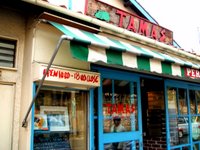 Recently, while on one of our weekend biking excursions, Tsugumi and I stumbled on Tamas, a family owned rustic bakery. Japan is full of French style bakeries but artisan breads are few and far between nor have I yet to come across any sprouted loaves. Tamas not only has artisan breads, they have a great assortment of rolls and pastries. Inside the little blue framed storefront is a cozy space with a street level entrance, displaying fresh baked breads. The smell of wholegrain bread is reminiscent of my childhood; I can recall as though it were yesterday when Vikki, my babysitter, removed her scrumptious, homemade golden loaves from the oven. There’s nothing more pleasant than recalling that buttery aroma, floating in the kitchen and the anticipation of spreading homemade raspberry jam over a warm slice.
Recently, while on one of our weekend biking excursions, Tsugumi and I stumbled on Tamas, a family owned rustic bakery. Japan is full of French style bakeries but artisan breads are few and far between nor have I yet to come across any sprouted loaves. Tamas not only has artisan breads, they have a great assortment of rolls and pastries. Inside the little blue framed storefront is a cozy space with a street level entrance, displaying fresh baked breads. The smell of wholegrain bread is reminiscent of my childhood; I can recall as though it were yesterday when Vikki, my babysitter, removed her scrumptious, homemade golden loaves from the oven. There’s nothing more pleasant than recalling that buttery aroma, floating in the kitchen and the anticipation of spreading homemade raspberry jam over a warm slice.Tamas is the kind of place that brings back those childhood memories. This weekend, we returned to relive that experience. We ordered a dark cherry pastry, a folded croissant, along with a raisin role, served hot, a dap of apple butter on the side. Mmmm.
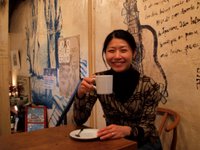
They don’t sell their customers on an array of coffee choices, however; instead they simply offer great drip coffees. Better to do it right than not and try to pass it off as the real thing. They also offer a lunch menu which includes a mouth watering basil, mozzarella, and tomato sandwich, served on… yes, fresh baked bread. We’ve never eaten lunch there but having seen it, there’s no denying the satisfaction of the person who did.
Finding Tamas was a gem. It’s the ideal place to unwind, enjoy great breads, and quality organic coffee. The charming atmosphere of a family run café while thumbing through Tolstoy's War and Peace, while jazz sounds hum in the background, is something I’ve long missed since leaving the Seattle coffee scene behind.
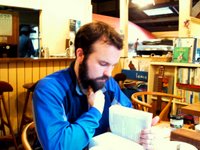 Everything found at Tamas comes naturally to the family who makes it happen; homemade breads and pastries, music selected by the people who play it (rather than a pre-programmed list from a corporate office somewhere), authentic murals, painted by local artists (as opposed to the trendy wallpaper pasted to the walls), and family hospitality that just comes with the package, not requiring the clientele to clear their throats in order to be noticed. In short, the experience is an authentic one, unlike the manufactured ambiance of the green and white Siren.
Everything found at Tamas comes naturally to the family who makes it happen; homemade breads and pastries, music selected by the people who play it (rather than a pre-programmed list from a corporate office somewhere), authentic murals, painted by local artists (as opposed to the trendy wallpaper pasted to the walls), and family hospitality that just comes with the package, not requiring the clientele to clear their throats in order to be noticed. In short, the experience is an authentic one, unlike the manufactured ambiance of the green and white Siren.On the weekends, they also sell fresh, organic produce at a reasonable price on the sidewalk out front. Unfortunately, we waited until after we finished our visit to browse the new harvest, which by that time had been pretty well picked over. We bought what we could, stuffing the greens into a backpack, and made our way back over the hill to our flat where we cooked up a big pot of nabe, Japanese stew- the perfect conclusion to a late winter afternoon.
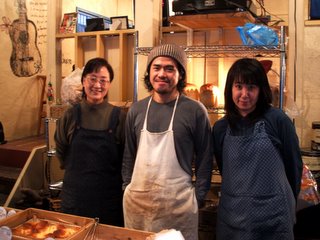
For locals who happen to be reading this, Tamas is located in Ashiya, just up from Ikari Super, a ways north of the Hankyu line, in the Higashiyama-cho neighborhood, at the base of the mountains.
